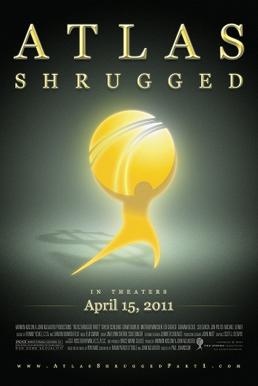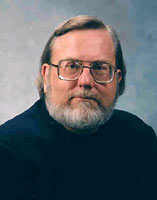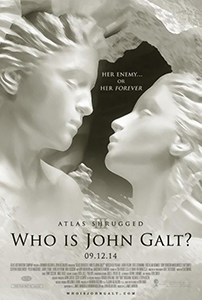Related Research Articles

Alice O'Connor, better known by her pen name Ayn Rand, was a Russian-born American author and philosopher. She is known for her fiction and for developing a philosophical system she named Objectivism. Born and educated in Russia, she moved to the United States in 1926. After two early novels that were initially unsuccessful and two Broadway plays, Rand achieved fame with her 1943 novel The Fountainhead. In 1957, she published her best-selling work, the novel Atlas Shrugged. Afterward, until her death in 1982, she turned to non-fiction to promote her philosophy, publishing her own periodicals and releasing several collections of essays.

Murray Newton Rothbard was an American economist of the Austrian School, economic historian, political theorist, and activist. Rothbard was a central figure in the 20th-century American libertarian movement, particularly its right-wing strands, and was a founder and leading theoretician of anarcho-capitalism. He wrote over twenty books on political theory, history, economics, and other subjects.
This is a bibliography for Ayn Rand and Objectivism. Objectivism is a philosophical system initially developed in the 20th century by Rand.

Chris Matthew Sciabarra is an American political theorist born and based in Brooklyn, New York. He is the author of three scholarly books—Marx, Hayek, and Utopia; Ayn Rand: The Russian Radical; and Total Freedom: Toward a Dialectical Libertarianism—as well as several shorter works. He is also the co-editor, with Mimi Reisel Gladstein, of Feminist Interpretations of Ayn Rand and co-editor with Roger E. Bissell and Edward W. Younkins of The Dialectics of Liberty: Exploring the Context of Human Freedom. His work has focused on topics including Objectivism, libertarianism, and dialectics.

The Romantic Manifesto: A Philosophy of Literature is a collection of essays regarding the nature of art by the philosopher Ayn Rand. It was first published in 1969, with a second, revised edition published in 1975. Most of the essays are reprinted from Rand's magazine The Objectivist.

Garet Garrett, born Edward Peter Garrett, was an American journalist and author, known for his opposition to the New Deal and U.S. involvement in World War II.
The Objectivist movement is a movement of individuals who seek to study and advance Objectivism, the philosophy expounded by novelist-philosopher Ayn Rand. The movement began informally in the 1950s and consisted of students who were brought together by their mutual interest in Rand's novel, The Fountainhead. The group, ironically named "The Collective" due to their actual advocacy of individualism, in part consisted of Leonard Peikoff, Nathaniel Branden, Barbara Branden, Alan Greenspan, and Allan Blumenthal. Nathaniel Branden, a young Canadian student who had been greatly inspired by The Fountainhead, became a close confidant and encouraged Rand to expand her philosophy into a formal movement. From this informal beginning in Rand's living room, the movement expanded into a collection of think tanks, academic organizations, and periodicals.
Ayn Rand's philosophy of Objectivism has been, and continues to be, a major influence on the right-libertarian movement, particularly libertarianism in the United States. Many right-libertarians justify their political views using aspects of Objectivism.
Libertarian science fiction is a subgenre of science fiction that focuses on the politics and social order implied by right-libertarian philosophies with an emphasis on individualism and private ownership of the means of production—and in some cases, no state whatsoever.

John A. Allison IV is an American businessman and the former CEO and president of the Cato Institute in Washington, D.C. Allison held a number of leadership positions in BB&T Corp. from 1987 until 2010 when he retired. He now serves as a director at Moelis & Company.
The Randian hero is a ubiquitous figure in the fiction of 20th-century novelist and philosopher Ayn Rand, most famously in the figures of The Fountainhead's Howard Roark and Atlas Shrugged's John Galt. Rand's self-declared purpose in writing fiction was to project an "ideal man"—a man who perseveres to achieve his values, and only his values.

Atlas Shrugged: Part I is a 2011 American political science fiction drama film directed by Paul Johansson. An adaptation of part of the philosopher Ayn Rand's 1957 novel of the same name, the film is the first in a trilogy encompassing the entire book. After various treatments and proposals floundered for nearly 40 years, investor John Aglialoro initiated production in June 2010. The film was directed by Paul Johansson and stars Taylor Schilling as Dagny Taggart and Grant Bowler as Hank Rearden.
John Galt is a character in Ayn Rand's novel Atlas Shrugged (1957). Although he is not identified by name until the last third of the novel, he is the object of its often-repeated question "Who is John Galt?" and of the quest to discover the answer. Also, in the later part it becomes clear that Galt had been present in the book's plot all along, playing several important roles though not identified by name.

Atlas Shrugged is a 1957 novel by Ayn Rand. It is her longest novel, the fourth and final one published during her lifetime, and the one she considered her magnum opus in the realm of fiction writing. She described the theme of Atlas Shrugged as "the role of man's mind in existence" and it includes elements of science fiction, mystery and romance. The book explores a number of philosophical themes from which Rand would subsequently develop Objectivism, including reason, property rights, individualism, libertarianism and capitalism, and depicts what Rand saw as the failures of governmental coercion. Of Rand's works of fiction, it contains her most extensive statement of her philosophical system.

Mimi Reisel Gladstein is a professor of English and Theatre Arts at the University of Texas at El Paso. Her specialties include authors such as Ayn Rand and John Steinbeck, as well as women's studies, theatre arts and 18th-century British literature. In 2011 she was named to the El Paso Historical Hall of Honor.

Journals of Ayn Rand is a book derived from the private journals of the novelist and philosopher Ayn Rand. Edited by David Harriman with the approval of Rand's estate, it was published in 1997, 15 years after her death. Some reviewers considered it an interesting source of information for readers with an interest in Rand, but several scholars criticized Harriman's editing as being too heavy-handed and insufficiently acknowledged in the published text.

Atlas Shrugged: Part II is a 2012 American drama film based on the 1957 novel Atlas Shrugged by the philosopher Ayn Rand. It is the second installment in the Atlas Shrugged film series and the first sequel to the 2011 film Atlas Shrugged: Part I, continuing the story where its predecessor left off. Directed by John Putch, the film stars Samantha Mathis, Jason Beghe, Esai Morales, Patrick Fabian, Kim Rhodes, Richard T. Jones, and D. B. Sweeney. The film was released on October 12, 2012.

Larry James Sechrest was an American economist who advocated the ideas of the Austrian School. He was a professor of economics at Sul Ross State University and was director of the university's Free Enterprise Institute.

Atlas Shrugged Part III: Who Is John Galt? is a 2014 American science fiction-drama film based on the philosopher Ayn Rand's 1957 novel Atlas Shrugged. It is the third installment in the Atlas Shrugged film series and the sequel to the 2012 film Atlas Shrugged: Part II, continuing the story where its predecessor left off. The release, originally set for July 4, occurred on September 12, 2014. The film used a completely different cast and crew from the second film, which itself used a completely different cast from the first film. Directed by J. James Manera, it stars Laura Regan, Kristoffer Polaha, and Joaquim de Almeida.
References
- ↑ Younkins, Edward. ""Who is Henry M. Galt?": A Review of Garet Garrett's "The Driver"". Rebirth of Reason. Retrieved 28 January 2022.
- ↑ Younkins, Edward. ""Who is Henry M. Galt?": A Review of Garet Garrett's "The Driver"". Rebirth of Reason. Retrieved 28 January 2022.
- ↑ Raimondo, Justin (1993). Reclaiming the American Right: The Lost Legacy of the Conservative Movement. Center for Libertarian Studies. ISBN 1-883959-00-4.
- ↑ Sciabarra, Chris Matthew (March–April 1999). "Books for Rand Studies". Full Context. 11 (4): 9–11.
- ↑ Kinsella, Stephan (October 2, 2007). "Ayn Rand and Garet Garrett". Mises Economics Blog. Ludwig von Mises Institute. Retrieved 2009-10-07.
- ↑ Bruce Ramsey (December 27, 2008). "The Capitalist Fiction of Garet Garrett". Ludwig von Mises Institute. Retrieved 2009-04-09.